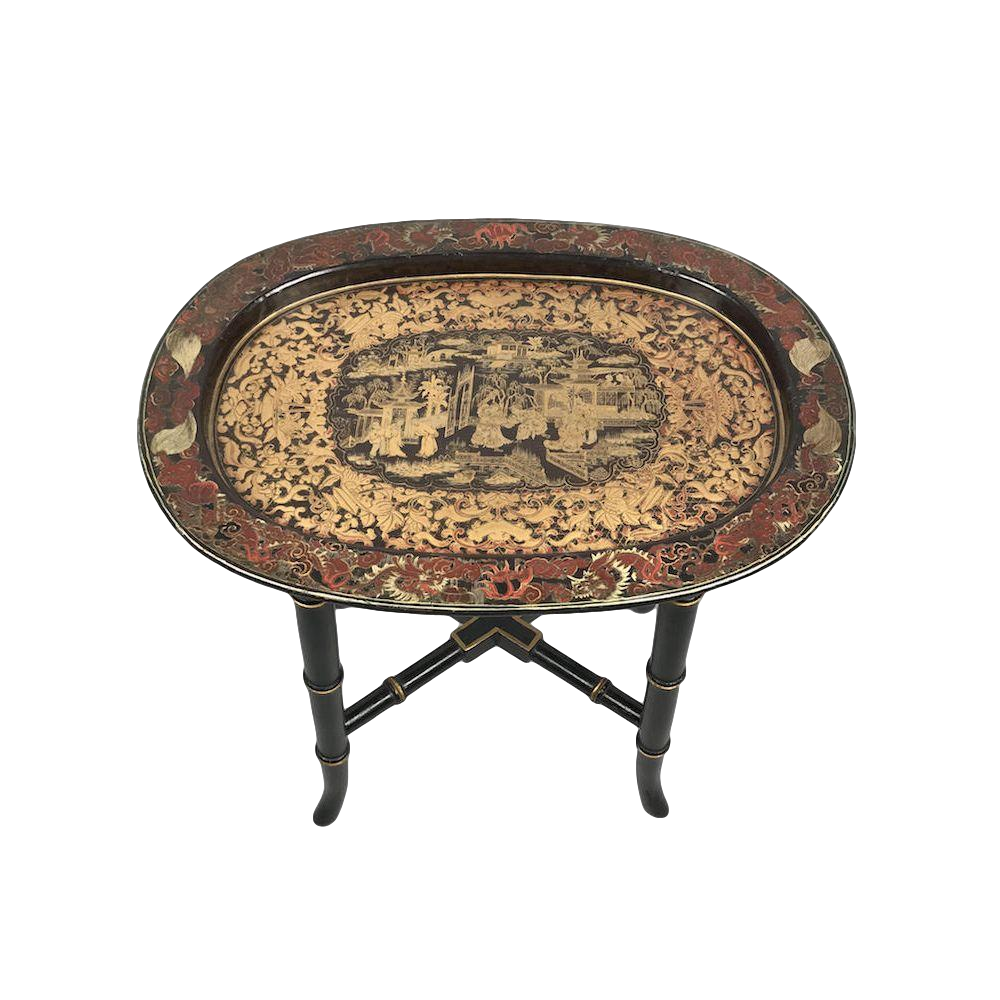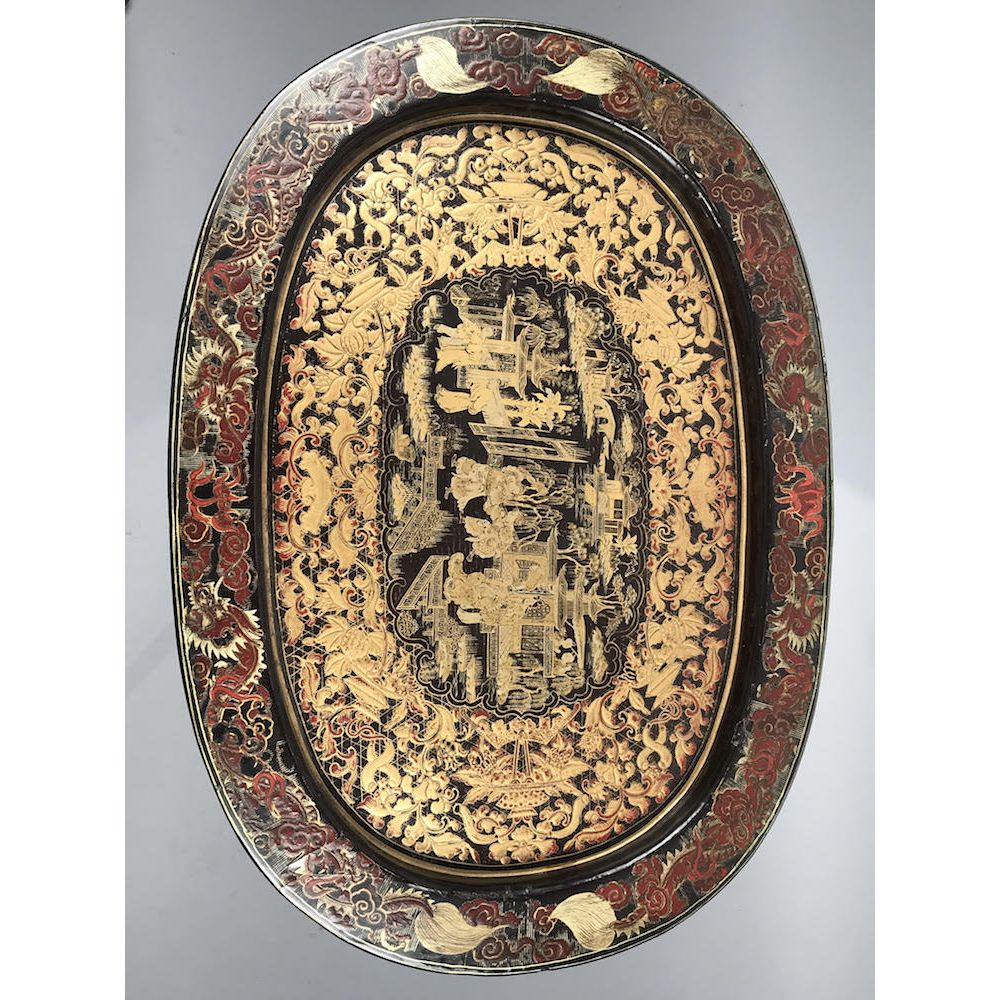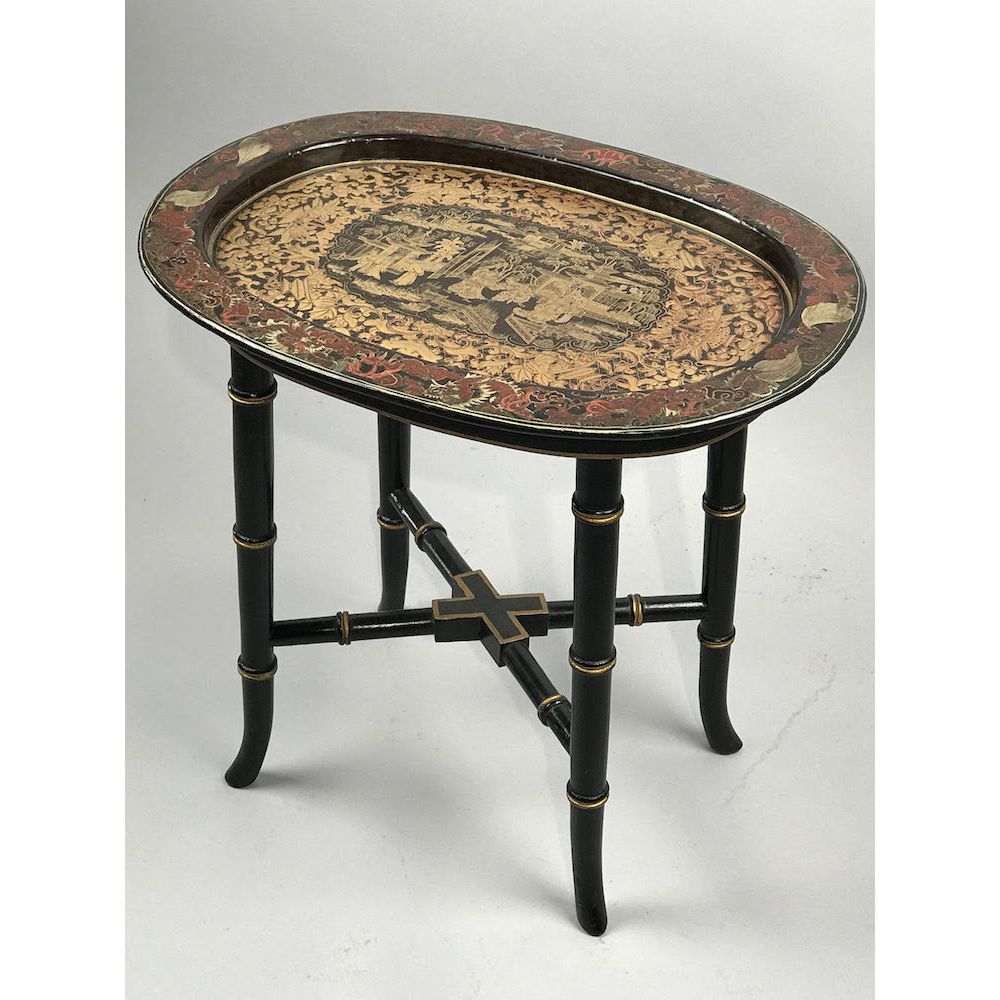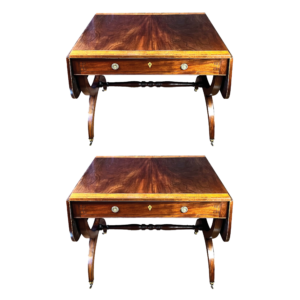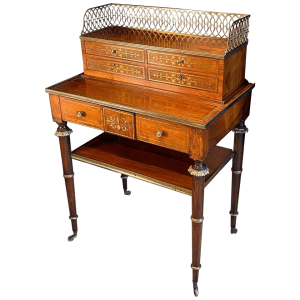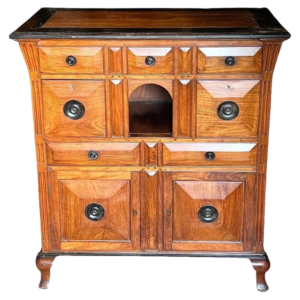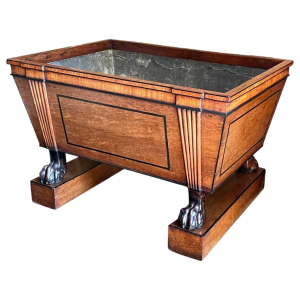Description
A Regency period polychrome chinoiserie-decorated oval papier mâché tray, on a bespoke ebonised and gilt stand.
Early 19th century, circa 1820.
Papier mâché (papier mache) is a French term, literally meaning “paper – mashed up”; a material consisting of paper pulp, sometimes reinforced and pressed with textiles, bound with an adhesive, such as glue, starch, or wallpaper paste.
A popular medium during the Regency period in England in the making of high quality and sophisticated trays decorated in the fashionable chinoiserie taste. The practice degenerated somewhat during the reign of Queen Victoria when these trays became mass produced. The fine Regency chinoiserie decoration was typically replaced with poor quality flower painting and inlaid with mother of pearl fragments. Romantic domestic scenes sometimes also appeared.
Literature:
Japanned papier mache and tinware 1740-1940, Yvonne M. Jones, ACC Distribution (2012).
Measures:
W 44 cm
D 32 cm
H 41 cm
BHA 1026
An antique tray table of useful compact size.



